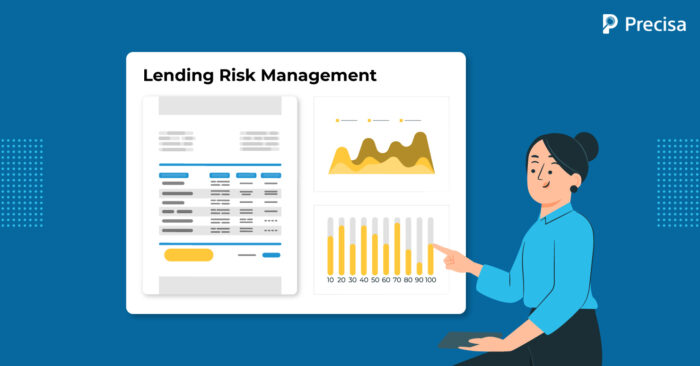Why Bank Statement Analysis Is Important in Lending Risk Management

In the financial year 2020-2021, the value of non-performing assets (NPAs) reported by public sector banks in India stood at INR 6 Trillion, while private sector banks reported NPAs to the tune of INR 2 Trillion. The growth of NPAs, also called “bad assets”, is a growing concern for lending institutions. According to the Reserve Bank of India, an NPA is a credit asset, such as a loan, which is unlikely to be repaid. NPAs eat into the profitability and sustainability of lending businesses. This is where in-depth, efficient bank statement analysis can empower lending businesses to make accurate decisions when evaluating loan applications at scale.
In this blog, we delve into the various pillars of bank statement analysis and how lending institutions can use it to their advantage to reduce the growth of loan defaults.
6 Pillars Of Efficient Bank Statement Analysis
Access to superior bank statement analysis software can help lending institutions optimise the loan application evaluation process by predicting the potential risks of a loan turning into an NPA. Here are six indicators that raise red flags:
1. Low Value and Frequency of Bank Deposits
There are several ways to measure a loan applicant’s fiscal health. One pillar is the number of deposits being made into the bank account. This could be in the form of monthly salary deposits for income from a business or self-employment. The value and frequency of such bank deposits indicate the earning capacity of a loan applicant. High-value and frequent deposits reflect profitability and healthy revenue generation capabilities.
On the other hand, if the last bank deposit made by a loan applicant was several months ago and the account has seen no incoming deposits since then, this can be considered a red flag. Irregular or sparse deposits are also a cause for concern. The logic is that loan applicants with regular income are more capable of paying back their Equated Monthly Installments (EMIs) on time.
2. Loan Payment Defaults
A loan applicant’s history with loan repayments reflects in their bank statements. One or two EMIs need not raise a cause for alarm. However, if the bank statement analysis detects multiple loan repayment defaults, it raises concerns about the loan applicant defaulting on future loan payments. However, there is also a possibility that a loan applicant has improved their creditworthiness since their last experience. A comprehensive bank statement analysis paints a holistic picture of a borrower’s current state of creditworthiness.
3. Consistently Low Cash Balance
The state of a loan applicant’s bank balance paints a clear picture of their financial well-being. For instance, borrowers who maintain a positive cash balance are less of a risk when it comes to replaying a loan. It shows positive financial habits because the applicant has excess cash that can tide them through any crisis, such as unemployment or business losses.
On the other hand, borrowers with a consistently low cash balance may need to pay penalties for not maintaining the minimum balance, which reflects in bank statement analysis. However, a low cash balance is not necessarily an indicator of low income. It can also mean that the loan applicant spends more than their income. Such a trend does not serve the borrower’s purpose when being considered for a retail loan. Ideally, the value of the cash balance must be higher than the potential loan instalments.
4. Detection of Bounced Cheques
Bank statement analysis can detect cases of bounced cheques. While one or two bounced cheques, followed by payment of dues soon after it happens, is not a problem, habitual cheque bouncing is a major red flag. It is a sign of poor financial habits and reflects an inability to honour one’s debts.
5. High Value and Frequency of Overdrafts
Most current accounts and some savings accounts come with an overdraft facility. This feature enables account holders to withdraw money or cover a transaction even when the account is low on funds. A high value and frequency of overdrafts indicate poor financial management. It can indicate a lower probability of the borrower paying back their loans on time. Bank statement analysis software can detect cases of overdrafts and alert the lender of this.
6. Review of Withdrawal History
A borrower’s withdrawal history and habits indicate their financial situation. It can show the existing credit that the borrower is paying off monthly and any personal liabilities for which the borrower is responsible. For instance, monthly withdrawal rules of the same amount can indicate an existing loan payment that a borrower has not declared. However, when bank statement analysis reveals that the borrower can make consistent payments for existing debt, it can also work in their favour.
The Takeaway
Today, various institutions offer loan products to a wide range of customers. These include banks, non-banking financial companies (NBFCs), and digital lending fintech platforms delivering home loans, business loans, personal loans, and other products to entrepreneurs, professionals, corporations, governments, and other customer profiles.
As the number of loan applications rises, it is prudent for lending institutions to strengthen their lending risk management function. The growth of digital lending is a key driver in this acceleration, and digital loans will continue to grow rapidly.
For lending businesses to stay competitive, they must expedite the loan application process while balancing it efficiently and accurately. Using bank statement analysis software can play a transformative role in helping businesses meet their targets and stay profitable.
Precisa’s automated bank statement analysis tool comes with transparent pricing and customized pricing models to meet the needs of diverse businesses. Piqued your interest? Book a free demo today for more information.




